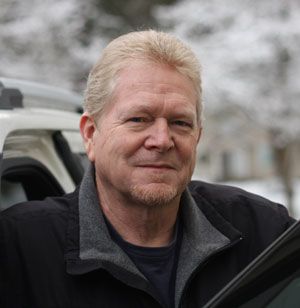School busses and crosswalks
Many drivers seem uncertain of the laws regarding school bus interaction. Reader H.P. has given the matter some serious thought, writing and wondering, “I have a question about school buses and 4 lane roads. On 2 lane roads there is no problem. When a bus stops and the flag goes up, everyone stops to let kids cross. However, 4 lane roads are another problem. If a bus stops and the flag goes up, does that mean that drivers must stop? The few times that I have faced that dilemma, I have had a mental debate: Should I stop and block traffic, or continue on my way keeping an eye out for anyone trying to cross. I am sure that I am not alone as I have observed others hesitating also. I would appreciate clarification on such a situation.”
In Washington, RCW 46.61.370, a law governing the situation H.P. described, is typical of rules applicable in other states. It, of course, requires drivers to stop when confronted with the visual signals of an “unloading” school bus (stationary bus with stop paddle and flashing lights displayed), but also names exceptions to that requirement.
There are two listed exceptions written in the law: “The driver of a vehicle upon a highway divided into separate roadways need not stop upon meeting a school bus which is proceeding in the opposite direction and is stopped for the purpose of receiving or discharging school children.” and, “The driver of a vehicle upon a highway with three or more marked traffic lanes need not stop upon meeting a school bus which is proceeding in the opposite direction and is stopped for the purpose of receiving or discharging school children.”
That should clear up the requirements of the law, but drivers must still use exceptional caution in the vicinity of any stopped school bus. Though the law may not require a stop in certain situations, there is always a potential presence of pedestrians in the periphery of any type of stopped bus.
Speaking of pedestrian safety, I spotted an interesting feature at a new Spokane crosswalk: flags, in the color of safety orange, intended for use by street-crossing pedestrians to make them more visible to adjacent motorists.
I’ve noticed no one using them yet, but they ARE new there. The concept is neither new nor untested, however, and it IS very simple. I read of the practice several years ago when it was introduced in Salt Lake City, Utah. A container of bright flags is placed at each end of the crosswalk and pedestrians can grab one while crossing to improve their odds of being seen while in the street.
This location, 29th Avenue at Manito Boulevard, has a fairly steady flow of runners and walkers — many with dogs, kids and baby strollers in accompaniment. Any sort of enhancement for spotting these street-crossers is welcome.
Simply standing at the edge of the crosswalk, or even standing there with a car stopped in one of the driving directions does not seem to work very well. While crossing 29th on Manito Boulevard in my vehicle I’ve often noticed a pedestrian needing to wait for traffic to clear completely in order to cross. Some drivers use the excuse (if they even notice the person) that the pedestrian may have just been standing there, not wishing to cross. Use of the flags would clarify that conundrum.
I’ve been the lone car stopped at that crosswalk for a pedestrian, hoping that they don’t cross while vehicle traffic continues forward from the opposite direction.
With the large number of people crossing at that location, a pedestrian bridge would be the best solution to enhance human safety and preserve efficient traffic flow. That option was ruled out, though, as even proposed crosswalks with a traffic light or flashing lights overhead were deemed too costly for that location. In the absence of those more effective investments, let’s hope the orange flags offer some improvement in safety.
If you encounter a vehicle stopped in the roadway, brake, scan the scene and prepare to stop; that car may be waiting for a pedestrian to cross the street.
Readers may contact Bill Love via e-mail at precisiondriving@spokesman.com.
